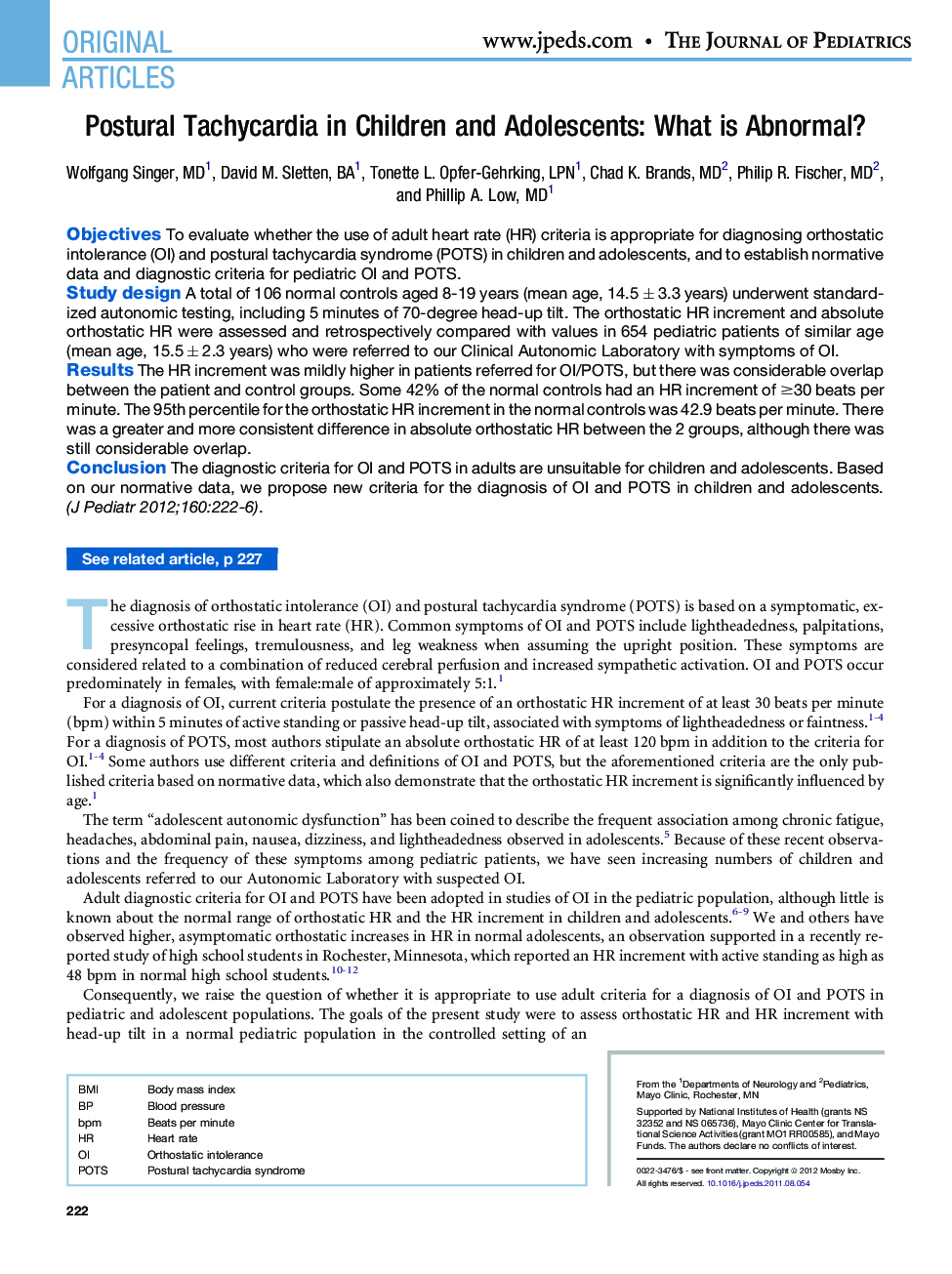| Article ID | Journal | Published Year | Pages | File Type |
|---|---|---|---|---|
| 4165754 | The Journal of Pediatrics | 2012 | 5 Pages |
ObjectivesTo evaluate whether the use of adult heart rate (HR) criteria is appropriate for diagnosing orthostatic intolerance (OI) and postural tachycardia syndrome (POTS) in children and adolescents, and to establish normative data and diagnostic criteria for pediatric OI and POTS.Study designA total of 106 normal controls aged 8-19 years (mean age, 14.5 ± 3.3 years) underwent standardized autonomic testing, including 5 minutes of 70-degree head-up tilt. The orthostatic HR increment and absolute orthostatic HR were assessed and retrospectively compared with values in 654 pediatric patients of similar age (mean age, 15.5 ± 2.3 years) who were referred to our Clinical Autonomic Laboratory with symptoms of OI.ResultsThe HR increment was mildly higher in patients referred for OI/POTS, but there was considerable overlap between the patient and control groups. Some 42% of the normal controls had an HR increment of ≥30 beats per minute. The 95th percentile for the orthostatic HR increment in the normal controls was 42.9 beats per minute. There was a greater and more consistent difference in absolute orthostatic HR between the 2 groups, although there was still considerable overlap.ConclusionThe diagnostic criteria for OI and POTS in adults are unsuitable for children and adolescents. Based on our normative data, we propose new criteria for the diagnosis of OI and POTS in children and adolescents.
